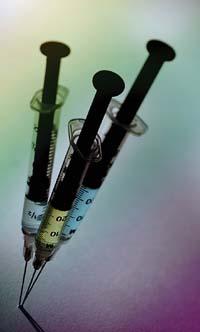Animal models animal models
2006/11/01 Lasa Oiarbide, Aitzol - Elhuyar Zientziaren Komunikazioa Iturria: Elhuyar aldizkaria
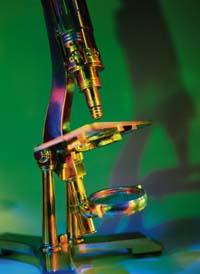
At present, mathematical or computer models are widely used to predict the development of a disease. With the help of a supercomputer, a virus can be simulated. Or perform statistical studies taking a sample of patients. On the other hand, the tissues can grow in the boxes of Petri and analyze them outside the body. In addition, animals can be used to study the disease. For example, an animal with a similar disease can be studied, or the same disease can be produced in an animal and analyzed. These last two are animal models.
An example may be the study of a genetic disease of a clean blood dog, similar to a human disease. The second example can be mouse cancer to simulate human cancer. There are other animal models, such as the development of a transplant technique in humans, taking as a model the transplant of organs between two pigs.
Researchers study these animal models to determine the development of a disease or the factors that influence its development.

The model can also be used for the research of the treatment of the disease. All this through controlled experiments.
Some classic animal models
The simplest model animal is undoubtedly the bacterium Escherichia coli. This bacterium is famous because thanks to its research, in the 1950s, it was possible to find the structure of DNA. The genetic map of the bacterium ended in 1997. E. coli is very appropriate for conducting research on DNA, since its genome is known very well. Among other things, there are computer simulations that represent the metabolism of the bacterium E. coli.
Eukaryotic organisms are more complicated than bacteria. One of them is Saccharomyces cerevisiae or bread yeast. Since the sequence of their genome was obtained, there are a complete database containing genetic information, computer tools for analysis of sequences, structure information, similarities with mammals and nomenclatures, among others. These databases allow to investigate proteins and their properties.
In this route from small to greater, the next stop are multi-celled animals. Caenorhabditis elegans is a small hermaphrodite nematode, used as a model organism since the 1960s. It has about a thousand cells, and it is possible to follow the duplications of each of them, as well as the complete genealogy of them. It is used, among other things, to investigate the genetics of development and neurobiology.
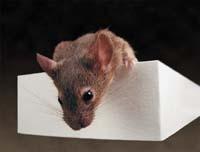
But, undoubtedly, the most famous of the animals used in the laboratories is the mouse, the Mus musculus. Although on the path of evolution man and mouse were distributed 75 million years ago,
DNA is very similar. This is why they are used to study the biology of genetic diseases. Diabetes is one of the diseases that affect genetically modified mice that are common in humans, so they can serve as an example for their study. To achieve these transgenic animals, human genes enter the eggs of mice.
A nearby example
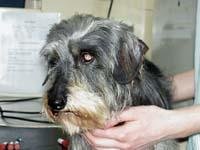
It is not necessary to go far to find experiments with animals. At the research center of the University of the Basque Country in the Cruces Hospital they work with the pigs.
They study the hypoxia of newborns. Children born with a C-section may suffer a loss of oxygen during childbirth, which can cause brain damage for a lifetime. That is why it is important to know the brain damage caused by hypoxia, for example, the number of neurons that kill. After studying the extent of damage, it will be possible to develop techniques to combat it.
But it is clear that this research cannot be done directly with children, because it would be too dangerous. It is necessary to use an animal model to develop a technique of fighting the disease. In the hypoxies of childbirth, the child receives brain damage and the brain of a one-week piggy bank is similar to that of a newborn baby. Therefore, the animal model in this experiment will be the cochinillo. The cerdito is the victim of a hypoxia, to later analyze the damage that his brain has suffered. Anesthesia is placed to avoid discomfort. But the animal will not survive the experiment. While he is still sleeping, the syringe that is left of his heart is minced and then his brain is removed for analysis in the laboratory. In the experiment an animal dies, but the result of the experiment can save newborns. From there, the ethical debate is on the table.
Legislation Legislation Legislation
The legislation currently in force in the European Union dates from 1986. In that year, the Council adopted a directive to somehow equate the legislations of European States. It must be said that in the Spanish state there was no animal protection law before this rule. The only mention is made in a 1929 circular. The Circular stipulates that persons who carry out ill-treatment, poisons, or unauthorized surgery to harmless animals will be punished with fines.
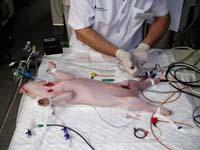
Roll Machine Giant
Although there are movements that support the substitution of animal research, all available means are used in the medical research process. Animal models are used in the same way as cell cultures, computer simulations, statistical studies and epidemiological studies are used. Not all these methods are counterposed. On the contrary, they complement each other and are the rollers and docks of this enormous medical research machine.
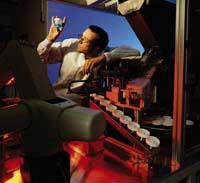
As part of medical research, animal models have certain advantages, such as in comparison to computer models. The latter are designed by the human being, which means a limitation, since this model is based on information already known. Cell cultures also have limitations because they are extracted from a larger organism and do not have to behave in the same way as the original organism.
The use of animal models also has advantages over direct analysis of patients. In general, a patient may present several diseases or complications, from which it is difficult to obtain clear conclusions about a single disease. On the other hand, a disease can take years to develop in humans, and a few days to develop in the mouse. The analysis of mice allows, therefore, to carry out faster and cheaper investigations.
On the contrary, sometimes animal models are too complex to investigate the evolution of a disease, being essential the use of simpler models.
